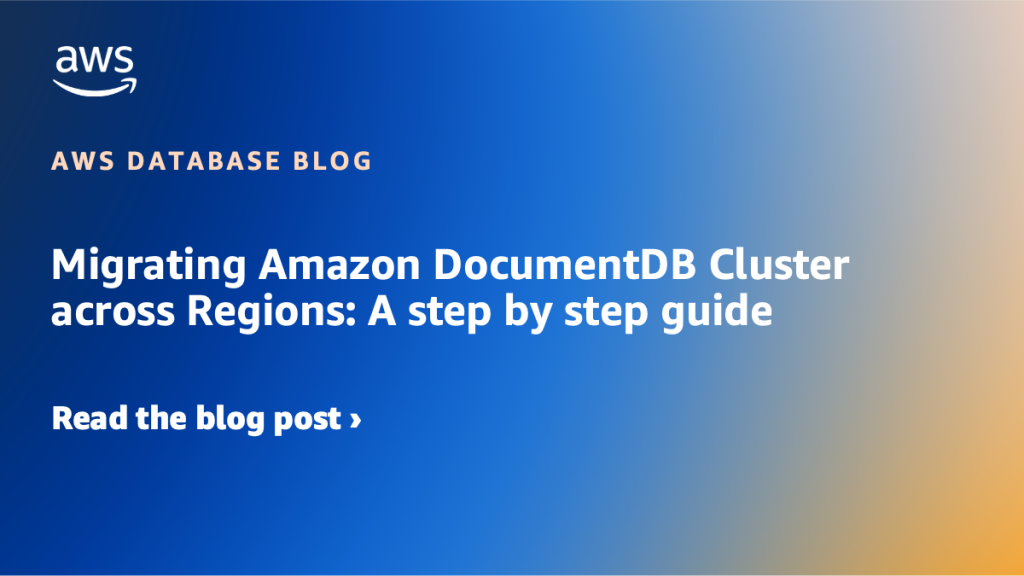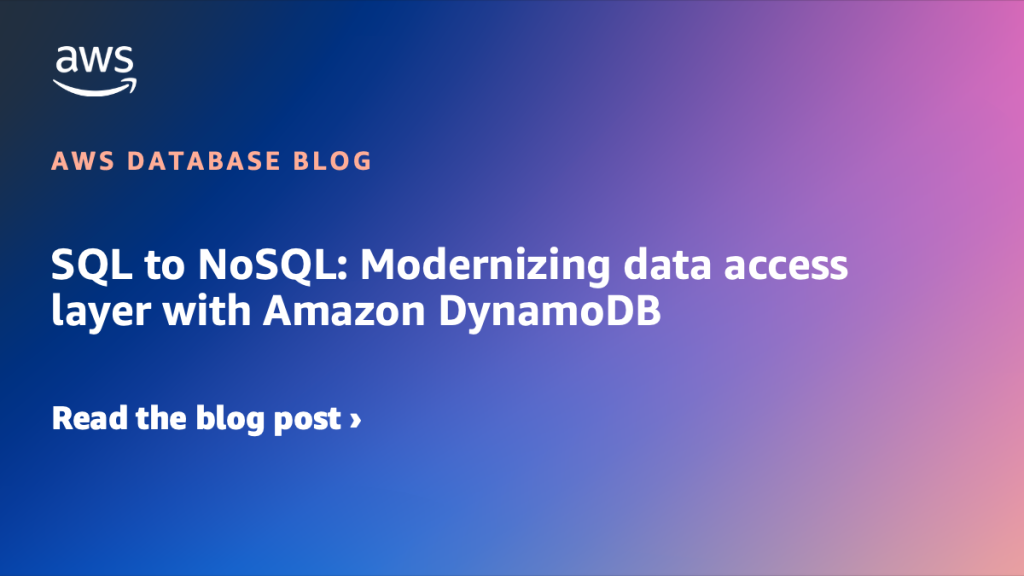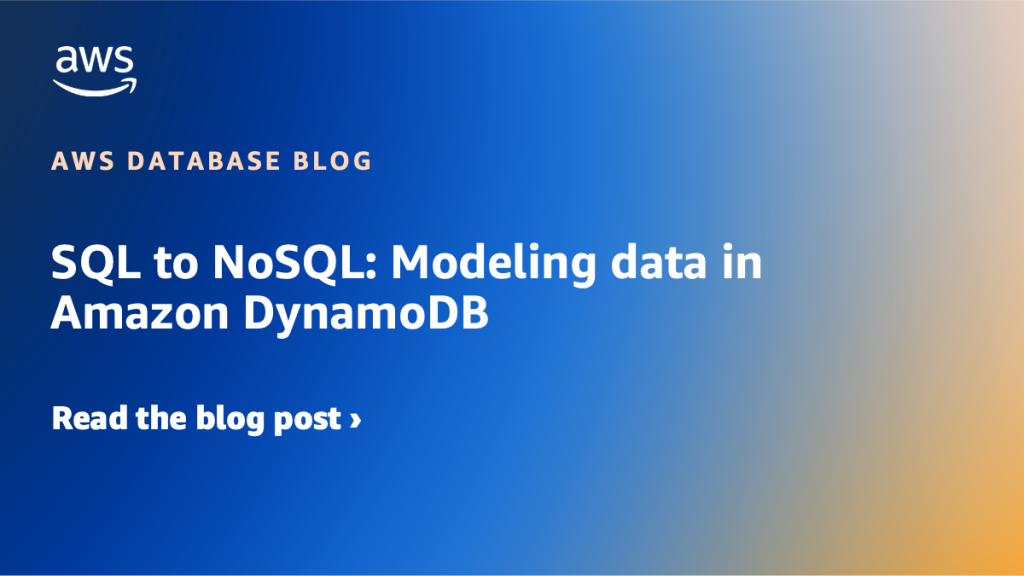AWS Database Blog
Category: Migration
Migrating Amazon DocumentDB Cluster across Regions: A step by step guide
In this post, you will learn to migrate a regional Amazon DocumentDB cluster from one AWS Region to another using the Global Cluster feature with low downtime and without performance impact.
SQL to NoSQL: Modernizing data access layer with Amazon DynamoDB
The transition from SQL-based access patterns to a DynamoDB API-driven approach presents opportunities to optimize how your application interacts with its data layer. This final part of our series focuses on implementing an effective abstraction layer and handling various data access patterns in DynamoDB.
SQL to NoSQL: Modeling data in Amazon DynamoDB
In this post, we explore strategies for designing DynamoDB data models, including entity identification, table design decisions, and relationship modeling approaches. We examine practical scenarios comparing different modeling strategies, helping you make informed decisions for your specific use case.
SQL to NoSQL: Planning your application migration to Amazon DynamoDB
This is the first part of a series exploring how to effectively migrate from SQL to DynamoDB. We will examine how to analyze existing database structures and access patterns to prepare for migration, focusing on schema analysis, query patterns, and usage metrics that inform DynamoDB data model design.
How an AWS customer in the learning services industry migrated and modernized SAP ASE to Amazon Aurora PostgreSQL
In this post, we explore how a leading AWS customer in the learning services industry successfully modernized its legacy SAP ASE environment by migrating to Amazon Aurora PostgreSQL-Compatible Edition. Partnering with AWS, the customer engineered a comprehensive migration strategy to transition from a proprietary system to an open source database while providing high availability, performance optimization, and cost-efficiency.
Migrate Google Cloud SQL for PostgreSQL to Amazon RDS and Amazon Aurora using pglogical
In this post, we provide the steps to migrate a PostgreSQL database from Google Cloud SQL to RDS for PostgreSQL and Aurora PostgreSQL using the pglogical extension. We also demonstrate the necessary connection attributes required to support the database migration. The pglogical extension works for the community PostgreSQL version 9.4 and higher, and is supported on RDS for PostgreSQL and Aurora PostgreSQL as of version 12+.
Run SQL Server post-migration activities using Cloud Migration Factory on AWS
In this post, we show you essential post-migration tasks to perform after migrating your SQL Server database to Amazon EC2 and how to automate this activity by using Cloud Migration Factory on AWS (CMF), such as validating database status, configuring performance settings, and running consistency checks. Additionally, we explore how the CMF solution can automate these essential tasks, providing efficiency, scalability, and heightened visibility to simplify and expedite your migration process.
Extract and migrate data from nested tables with user-defined nested types from Oracle to PostgreSQL
In Oracle, UDTs can have member functions written in PL/SQL that are integrated directly into the UDT. In contrast, PostgreSQL currently doesn’t allow member functions within UDTs. In this post, we dive deep into these differences and provide guidance for a smooth migration, helping ensure that the integrity of your data models is maintained throughout the process. We will also walk you through the details of converting complex member type functions in the multi-nested UDT from Oracle to PostgreSQL.
Challenges and strategies of migrating a high-throughput relational database
In this post, we explore key strategies and AWS tools to help you successfully migrate your high-throughput relational database while minimizing business disruption.
How Heroku migrated hundreds of thousands of self-managed PostgreSQL databases to Amazon Aurora
In this post, we discuss how Heroku migrated their multi-tenant PostgreSQL database fleet from self-managed PostgreSQL on Amazon Elastic Compute Cloud (Amazon EC2) to Amazon Aurora PostgreSQL-Compatible Edition. Heroku completed this migration with no customer impact, increasing platform reliability while simultaneously reducing operational burden. We dive into Heroku and their previous self-managed architecture, the new architecture, how the migration of hundreds of thousands of databases was performed, and the enhancements to the customer experience since its completion.









